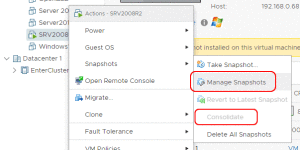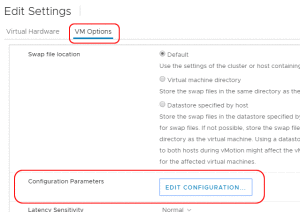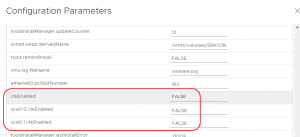← All Tutorials
How to reset CBT (Changed Block Tracking) on VMware ESXi virtual machines
In this short tutorial, we will guide you through the simple steps to restore Changed Block Tracking (CBT) on vSphere virtual machines.
CBT is a key parameter for configuring a VMware ESXi virtual machine, as it allows incremental and differential backups of VMware virtual machines when enabled. In practice, virtual machines running on ESXi hosts can track the sectors of the disk that have been modified. This process, known as Changed Block Tracking (CBT), allows you to save only the portions of the VM disk that have been modified since the last backup, improving performance and optimizing storage space. Additionally, backups performed using CBT allow you to have multiple restore points for the VM, depending on the number of configured backups.
See also: Backup and Replication of VMware vSphere/ESXi with Iperius Backup
Important note: before starting this procedure, ensure that the virtual machine is not running from a snapshot.
For further details, consult the official VMware articles:
To restore CBT on a vSphere virtual machine, follow the steps below:
- Open the vSphere Web Client.
- Right-click on the virtual machine and select Shut Down.
- Right-click on the virtual machine, select Snapshot, and then Snapshot Management. Ensure that there are no active snapshots. If present, perform a consolidation.

- Right-click on the virtual machine and select Edit Settings.

- Go to the VM Options tab, select the General section, and then click Configuration Parameters -» “Edit configuration”


- Disable CBT for the virtual machine by setting the ctkEnabled value to false.
- Disable CBT for each individual virtual disk connected by setting the scsix: x.ctkEnabled value for each connected virtual disk to false (where scsix: x is the SCSI controller and the SCSI device ID of the virtual disk).
- Access the folder on the datastore that contains the virtual machine (right-click on the datastore and then click “Browse Datastore”).
- Ensure there are no snapshot files (.delta.vmdk) in the virtual machine’s folder.
- Remove the -CTK.VMDK files from the virtual machine’s folder.
- In the vSphere Web Client, right-click on the virtual machine and select Power -» Power On.
- If you’re using a backup application that utilizes CBT (see: Backup and Replication of VMware vSphere/ESXi with Iperius Backup), you will need to manually re-enable CBT.
Note: the first backup performed after restoring CBT will be a full backup. All subsequent incremental/differential backups will reference the modification IDs generated after the full backup.
Re-enable CBT for incremental virtual machine backups:
This procedure may be necessary, for example, if errors occur during incremental or differential backups. After completing this operation, to perform incremental or differential backups, you will need to re-enable CBT by setting it to true. Of course, in this case as well, it is crucial to verify that no active snapshots are present and that the operation is performed with the machine powered off.
Re-enable backups on Iperius after a CBT error:
If an error occurs during virtual machine backups with Iperius related to querying CBT (“You need to reset the ‘Changed Block Tracking’ (CBT) for the virtual machine“), an additional step will be required (in addition to resetting CBT in the virtual machine settings) on the destination folders for incremental/differential backups. Since these backups reference a previous backup with a specific CBT value, Iperius cannot append new backups to the existing ones after the CBT reset and will continue to return an error. Therefore, it will be necessary to delete or rename the existing backup folders and then perform a new full backup.
For more information:
For any questions or doubts regarding this tutorial,
Contact us